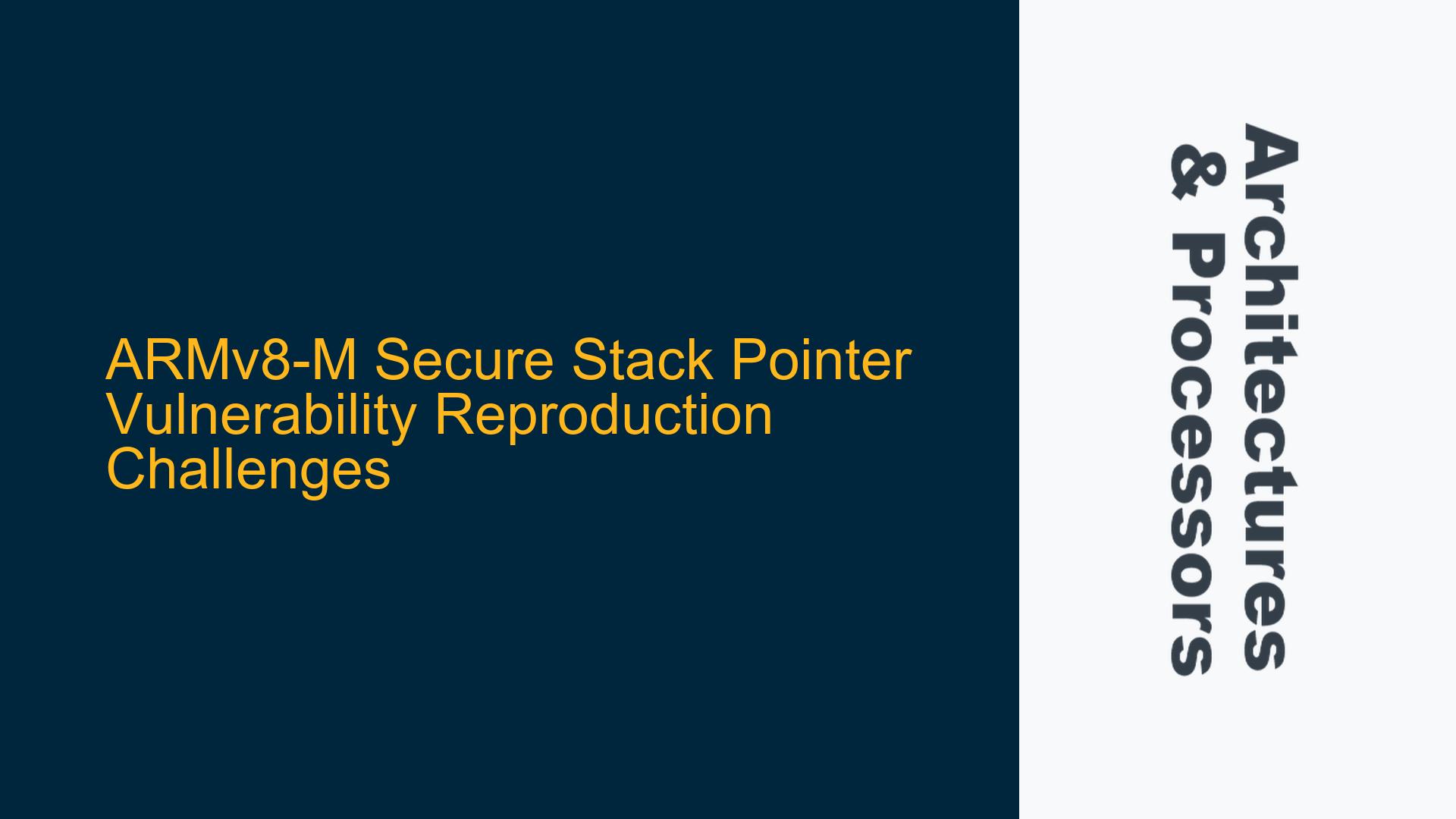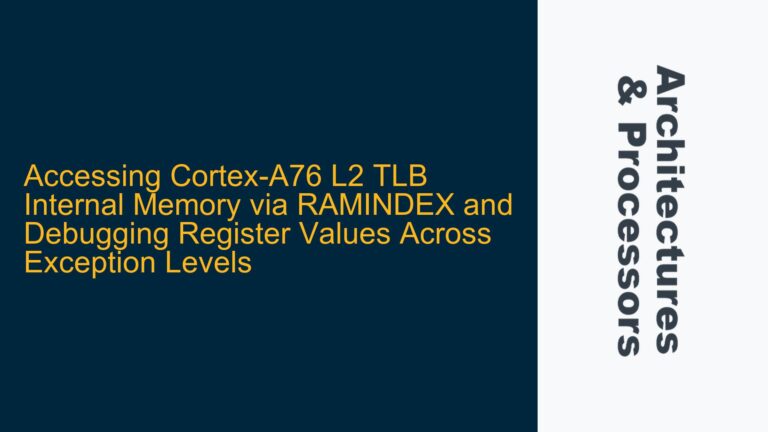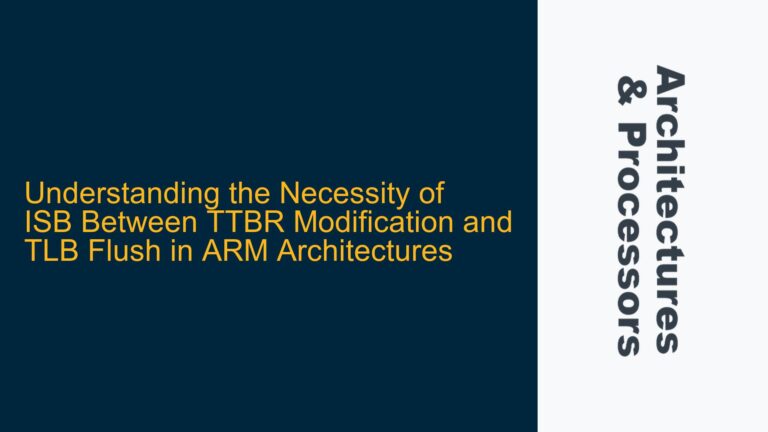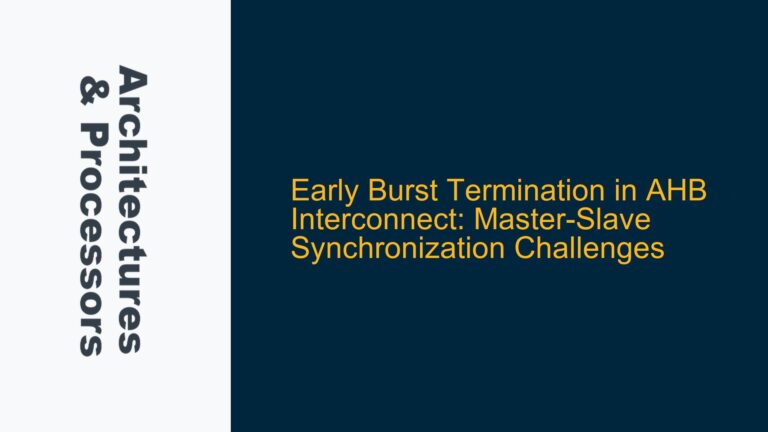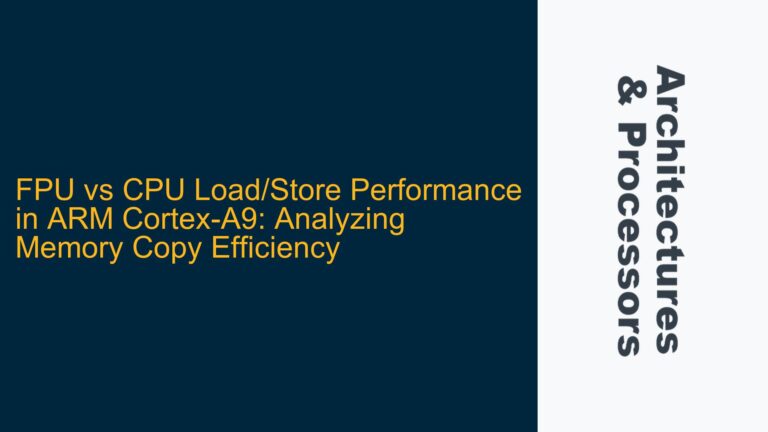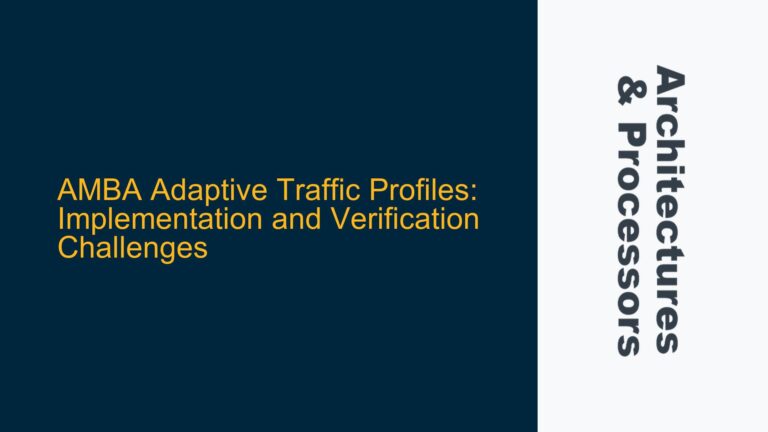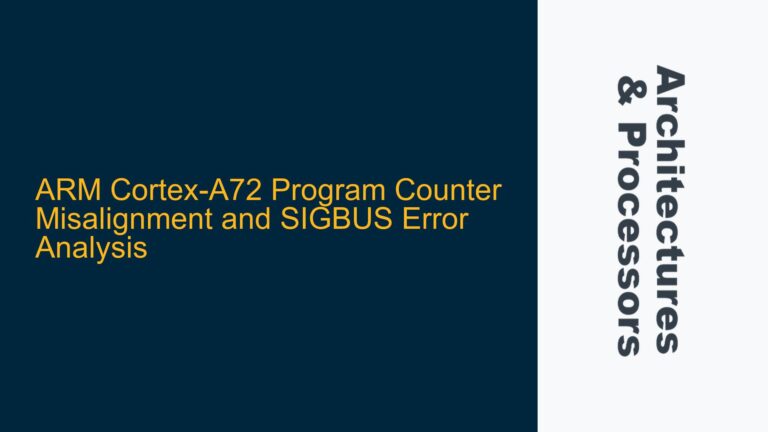ARMv8-M Secure Stack Pointer Vulnerability Overview (CVE-2020-16273)
The ARMv8-M architecture introduces a security extension known as TrustZone for ARM Cortex-M processors, which partitions the system into Secure and Non-secure worlds. This partitioning is designed to isolate sensitive code and data in the Secure world from potentially malicious or untrusted code in the Non-secure world. A critical component of this isolation is the management of the Secure stack, which is used by Secure world software to store return addresses, local variables, and other critical data during function calls.
The vulnerability identified as CVE-2020-16273 pertains to improper management of the Secure stack in ARMv8-M processors. Specifically, if Secure software does not correctly initialize or manage the Secure stack, it becomes possible for Non-secure world software to manipulate the Secure stack. This manipulation can lead to a stack underflow or overflow, potentially allowing Non-secure software to influence the control flow of Secure software. This could result in arbitrary code execution in the Secure world, bypassing the security mechanisms provided by TrustZone.
The vulnerability is particularly concerning because it undermines the fundamental security guarantees of the ARMv8-M architecture. The Secure stack is supposed to be inaccessible to Non-secure software, but if it can be manipulated, the entire security model of the system is compromised. The ARM advisory note describes two specific attack scenarios where this vulnerability could be exploited, both involving stack underflow situations.
Secure Stack Initialization and Management Issues
The root cause of the CVE-2020-16273 vulnerability lies in the improper initialization and management of the Secure stack in ARMv8-M processors. When the Secure stack is created, it must be properly sealed to prevent any unauthorized access or manipulation by Non-secure software. Sealing the stack involves setting up a guard region at the end of the stack, which is used to detect stack underflows. If this guard region is not properly set up, or if the stack pointer is not correctly managed, it becomes possible for Non-secure software to manipulate the stack pointer and cause a stack underflow.
In the context of ARMv8-M, the Secure stack is typically managed by the Secure world software, which includes the Secure firmware and any Secure applications. The stack pointer for the Secure stack is stored in the Secure world’s register set, and it is supposed to be inaccessible to Non-secure software. However, if the Secure stack is not properly sealed, or if the stack pointer is not correctly managed, it becomes possible for Non-secure software to manipulate the stack pointer indirectly.
One of the key issues is that the Secure stack pointer can be influenced by Non-secure software if the Secure world does not properly manage the stack boundaries. For example, if the Secure world does not check the stack pointer before using it, or if it does not properly handle stack underflows, it becomes possible for Non-secure software to manipulate the stack pointer and cause a stack underflow. This can lead to a situation where Non-secure software can overwrite the Secure stack, potentially altering the control flow of Secure software.
Another issue is that the Secure stack may not be properly initialized when the system boots. If the Secure stack is not initialized with a proper guard region, or if the stack pointer is not set to the correct initial value, it becomes possible for Non-secure software to manipulate the stack pointer and cause a stack underflow. This can lead to a situation where Non-secure software can overwrite the Secure stack, potentially altering the control flow of Secure software.
Secure Stack Pointer Manipulation and Control Flow Influence
The manipulation of the Secure stack pointer by Non-secure software can have serious consequences for the security of the system. If the Secure stack pointer is manipulated, it can lead to a stack underflow, where the stack pointer moves below the allocated stack space. This can result in the Secure stack being overwritten by Non-secure software, potentially altering the control flow of Secure software.
In the context of ARMv8-M, the control flow of Secure software is critical to maintaining the security of the system. If the control flow is altered, it can lead to arbitrary code execution in the Secure world, bypassing the security mechanisms provided by TrustZone. This can allow Non-secure software to execute code in the Secure world, potentially gaining access to sensitive data or compromising the security of the system.
One of the key challenges in reproducing the CVE-2020-16273 vulnerability is that it requires a specific set of conditions to be met. The Secure stack must be improperly managed, and the Non-secure software must be able to manipulate the stack pointer in a way that causes a stack underflow. Additionally, the Secure software must not detect the stack underflow, allowing the Non-secure software to overwrite the Secure stack and alter the control flow.
In the case of the ARM V2M-MPS2+ motherboard prototyping Cortex-M33, the experiments conducted by Mintancy did not reproduce the vulnerability. This suggests that the specific conditions required to exploit the vulnerability may not be present in this particular setup. However, this does not necessarily mean that the vulnerability is not exploitable in other setups or configurations.
Secure Stack Management Best Practices and Mitigation Strategies
To mitigate the risk of the CVE-2020-16273 vulnerability, it is essential to follow best practices for Secure stack management in ARMv8-M processors. This includes properly initializing the Secure stack, setting up a guard region to detect stack underflows, and ensuring that the stack pointer is correctly managed throughout the execution of Secure software.
One of the key best practices is to always initialize the Secure stack with a guard region. This guard region should be placed at the end of the stack, and it should be used to detect stack underflows. If the stack pointer moves into the guard region, it indicates that a stack underflow has occurred, and the Secure software should take appropriate action to prevent further manipulation of the stack.
Another best practice is to always check the stack pointer before using it. This includes checking that the stack pointer is within the allocated stack space, and that it is not pointing to the guard region. If the stack pointer is outside the allocated stack space, or if it is pointing to the guard region, it indicates that a stack underflow has occurred, and the Secure software should take appropriate action to prevent further manipulation of the stack.
Additionally, it is important to ensure that the Secure stack is properly sealed when it is created. This involves setting up the guard region and initializing the stack pointer to the correct initial value. If the Secure stack is not properly sealed, it becomes possible for Non-secure software to manipulate the stack pointer and cause a stack underflow.
Finally, it is important to implement proper error handling and recovery mechanisms in Secure software. If a stack underflow is detected, the Secure software should take appropriate action to recover from the error and prevent further manipulation of the stack. This may include resetting the stack pointer, terminating the affected task, or taking other appropriate actions to ensure the security of the system.
In conclusion, the CVE-2020-16273 vulnerability highlights the importance of proper Secure stack management in ARMv8-M processors. By following best practices for Secure stack initialization, management, and error handling, it is possible to mitigate the risk of this vulnerability and ensure the security of the system. While the specific conditions required to exploit the vulnerability may not be present in all setups, it is essential to take proactive steps to prevent stack manipulation and ensure the integrity of the Secure stack.
